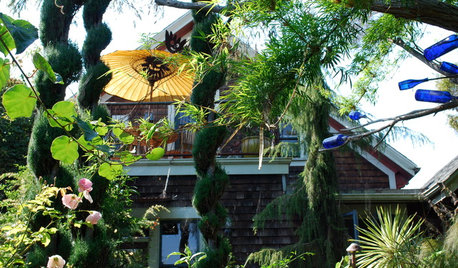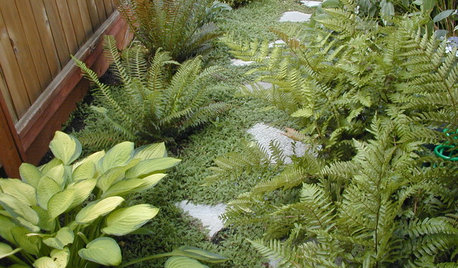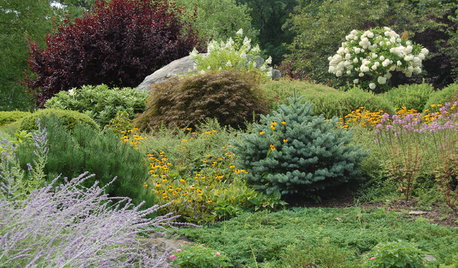Should I purchase Mulch OR Ground Covering Conifers??
ricksample
12 years ago
Related Stories

GROUND COVERSGround Force: 10 Top Ground Covers for Your Garden
Protect your soil from weeds and drought this summer with a living mulch of ground covers
Full Story
GARDENING GUIDESThe Art of Green Mulch
You can design a natural garden that doesn’t rely on covering your soil with wood and bark mulch
Full Story
GARDENING GUIDES6 Native Ground Covers for Tough, Dry Spots
Sun beating down on your sandy gravel? Thick shade darkening your clay soil? There’s a ground cover here for you
Full Story
GARDENING GUIDESNew Ways to Think About All That Mulch in the Garden
Before you go making a mountain out of a mulch hill, learn the facts about what your plants and soil really want
Full Story
PLANTING IDEASDesigning With Conifers: How to Unite Your Landscape
Create a landscape full of intrigue and artistry with the right placement of conifers and their supporting players
Full Story
LANDSCAPE DESIGN6 Great Ways With Garden Ground Covers
Use them as problem solvers, weed killers, color and texture providers ... ground cover plants have both practical and visual appeal
Full Story
PLANTING IDEASStretch the Budget, Seasons and Style: Add Conifers to Your Containers
Small, low-maintenance conifers are a boon for mixed containers — and you can transplant them to your garden when they’ve outgrown the pot
Full Story
GARDENING GUIDESDesigning With Conifers: Find the Perfect Fit for Your Landscape
Conifers range from fairy-garden size to 70 feet tall. Here’s how to decifer the plant tag for the perfect long-term fit in your garden
Full Story
GARDENING GUIDES5 Weed-Smothering Ground Covers
Let these landscape plants do the dirty work of choking out weeds while you sit back and enjoy the view
Full Story
GARDENING GUIDESDesigning With Conifers: Finding the Right Garden Bedmates
In gardening, building on commonalities creates an enduring relationship
Full Story






wisconsitom
ken_adrian Adrian MI cold Z5
Related Discussions
Conifer Garden - best color mulch?
Q
Black Woven Cloth Ground Cover/Mulch
Q
Does mulch help or hinder ground cover from spreading?
Q
Does mulch help or hinder ground cover from spreading?
Q
ricksampleOriginal Author
scpalmnut
dcsteg
ken_adrian Adrian MI cold Z5
ricksampleOriginal Author
ken_adrian Adrian MI cold Z5
dcsteg
ricksampleOriginal Author
dcsteg
whaas_5a
ricksampleOriginal Author
ladylotus
ricksampleOriginal Author
Snowden_Yesteryear
ken_adrian Adrian MI cold Z5
ricksampleOriginal Author
dcsteg
alley_cat_gw_7b
ricksampleOriginal Author